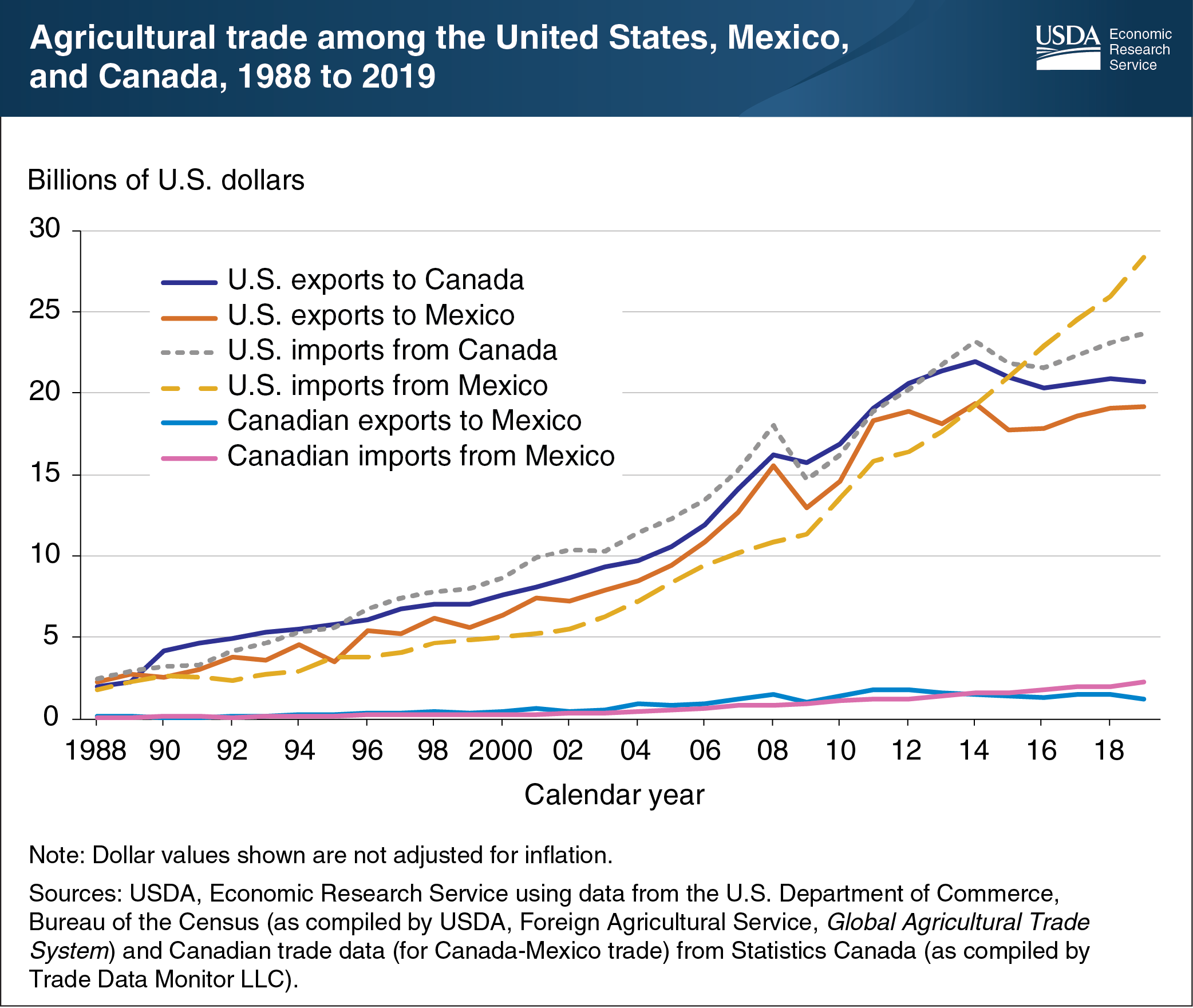President Donald J. Trump has taken a direct, no-nonsense approach to protect American workers and industries. Under a declared national emergency using the International Emergency Economic Powers Act, he’s making bold moves to correct years-long trade imbalances and what he sees as economic exploitation by U.S. trading partners.
At midnight EDT on April 5, 2025, a 10% tariff kicked in on goods from all countries, setting a firm baseline. But the policy doesn’t stop there. Nations with the largest trade deficits with the United States, such as China, are facing an even tougher measure. Chinese imports now incur a steep 34% tariff—piling on previous duties to push the effective rate well over 54%. The goal is clear: force trading partners to play fair when it comes to trade terms.
 United States-Mexico-Canada Agreement (USMCA) provides an ... [NAFTA. The total value of intraregional agricultural trade]
United States-Mexico-Canada Agreement (USMCA) provides an ... [NAFTA. The total value of intraregional agricultural trade]
The administration argues that long-standing issues—like persistent goods trade deficits, the decline of American manufacturing jobs, and an overreliance on vulnerable global supply chains—have hurt the nation. It also points to factors like high European VATs, questionable currency policies, and the offshoring of crucial industries such as advanced manufacturing, automotive production, pharmaceuticals, and everyday electronics. Critics, however, fear these measures could eventually lead to higher prices for U.S. consumers.
Certain products are getting a pass from the new reciprocal tariffs. These exemptions cover items under specific legal provisions (50 USC 1702(b)), products already subject to Section 232 tariffs (including steel, aluminum, autos, and auto parts), and key sectors like copper, pharmaceuticals, semiconductors, and lumber. Moreover, goods from Canada and Mexico that meet USMCA standards will continue to benefit from more relaxed treatment, unlike products that fall short of these criteria.
Flexibility is also a key part of the strategy. The president retains the power to adjust these tariffs—raising them if other nations hit back or scaling them down when partners make genuine efforts to balance trade.
China wasted no time in striking back. In a swift countermeasure, Chinese officials announced a 34% tariff on all U.S. imports, alongside additional steps like enforcing controls on rare earth elements and blacklisting certain American companies. Beijing slammed the U.S. move as nothing short of unilateral bullying, hinting that the trade war might just be heating up further.
The reaction on global financial markets was immediate. Stock indices across the United States, United Kingdom, and Europe plunged, as investors braced for what could be a longer, more contentious trade conflict that might slow growth and stoke inflation.
Supporters highlight historical trends from Trump’s first term, when similar measures helped reshore jobs in industries such as steel and manufacturing. Some analyses even suggest that a modest global tariff could significantly boost the U.S. economy, create millions of jobs, and raise household incomes.
Yet, the situation remains complex. The U.S. has long enjoyed some of the lowest tariff rates—averaging around 3.3% under most-favored-nation agreements—while many trading partners impose much steeper duties. This imbalance has fueled a massive trade deficit and eroded the competitiveness of American industries over time.
In his public addresses, President Trump has made it clear that access to the American market must be earned through fair, reciprocal trade practices. Even as critics warn that these tariffs may eventually burden consumers with higher prices, the administration is steadfast in its commitment to an America First agenda.
This tariff battle marks a turning point in the country’s economic policy. As America boldly reclaims what it sees as its economic sovereignty, all eyes will be on the coming months to see if these measures can rebalance trade relationships and restore confidence in a fair, rules-based international market.